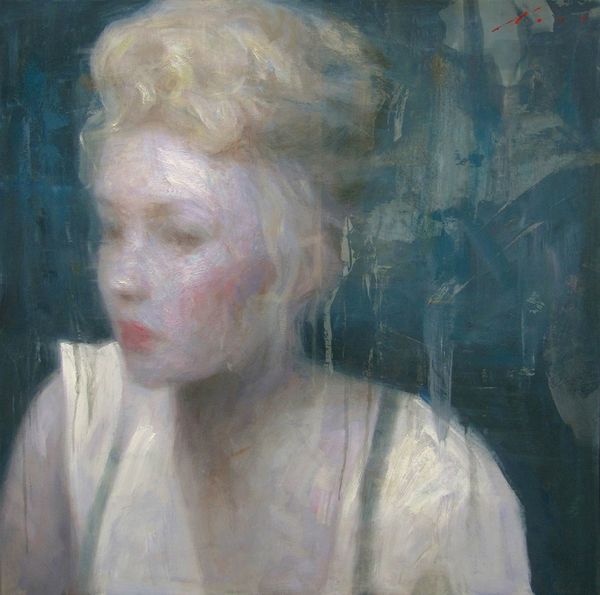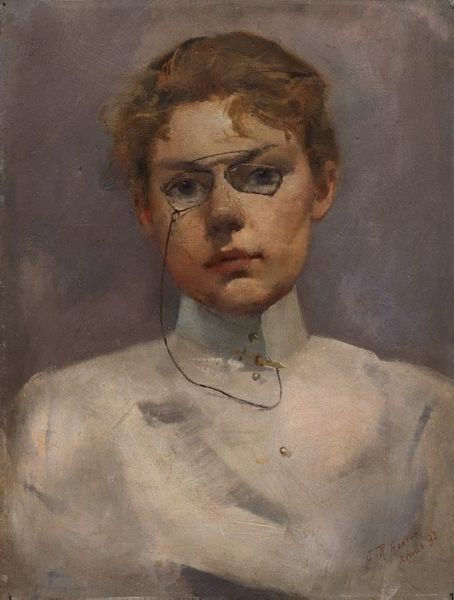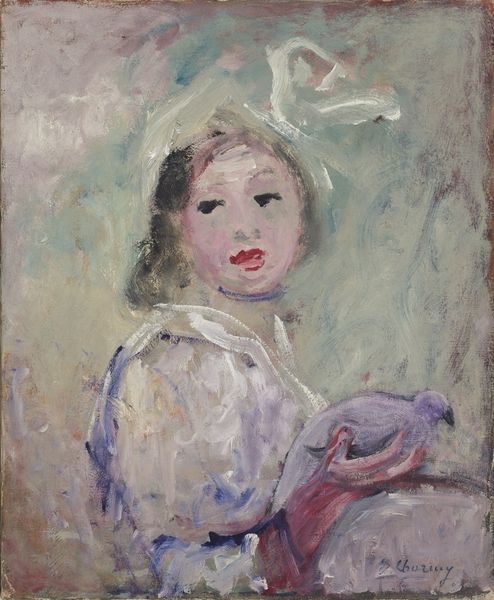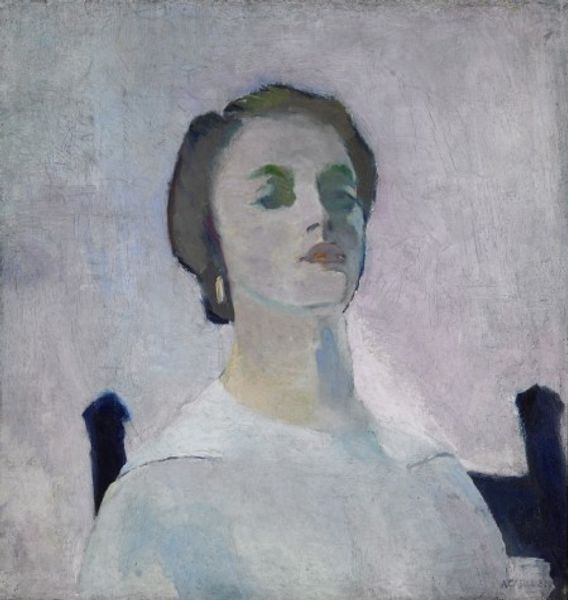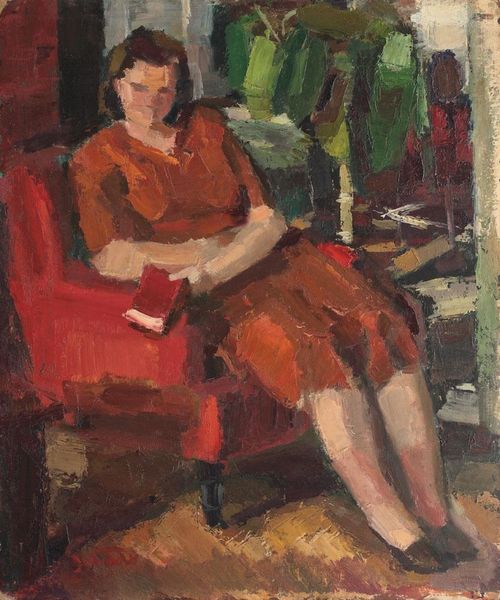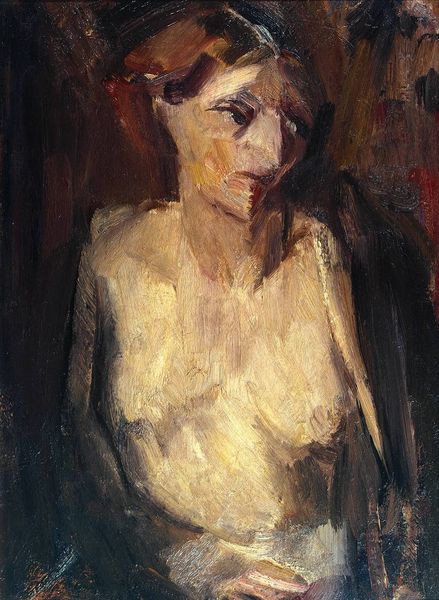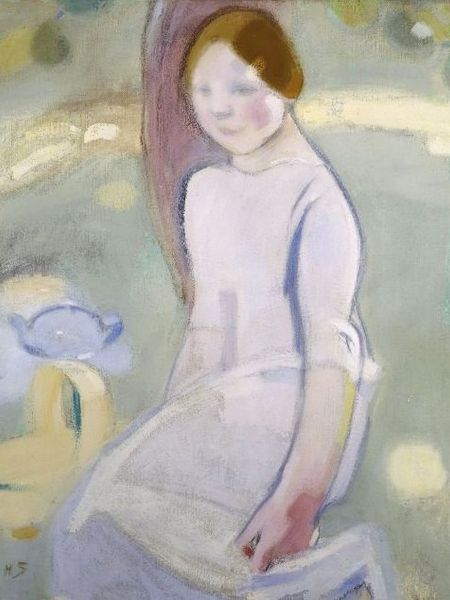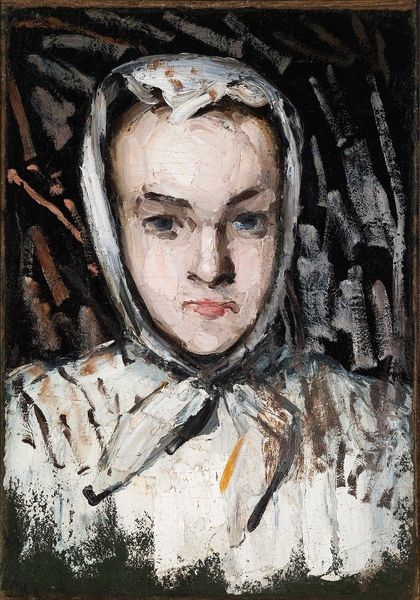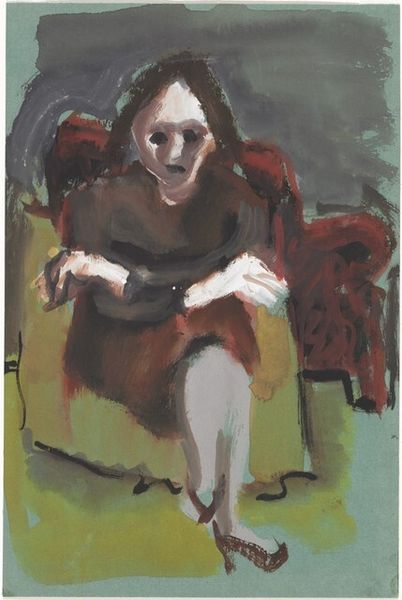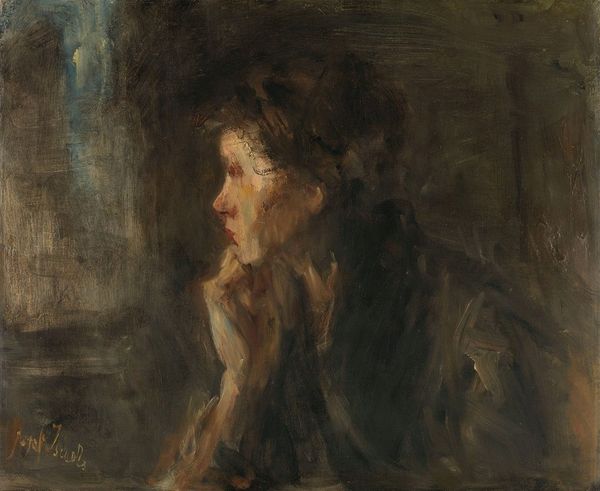
painting, oil-paint
#
portrait
#
painting
#
oil-paint
#
academic-art
#
portrait art
#
realism
Copyright: Edwin Dickinson,Fair Use
Curator: Up next, we have Edwin Dickinson's "SANDRA" from 1947, an oil on canvas portrait rendered with remarkable subtlety. What's your initial impression? Editor: It feels heavy, almost burdened. There's a weight in her gaze and in the brushstrokes themselves. It's not quite melancholy, more like… introspective fatigue. Curator: I can see that. There is a palpable weariness. Knowing Dickinson, who often grappled with portraying fleeting moments and obscured memories, this reading feels true to form. Editor: The way he handles the light is fascinating. It's almost exclusively concentrated on her face and chest, isolating her from the darkness behind, which enhances her sense of vulnerability but it also feels contrived and old fashioned. Is it about gender, do you think, highlighting beauty whilst hiding something deeper in the shadows? Curator: I'm not entirely convinced it is about vulnerability, or only vulnerability at any rate. The intense focus on the illuminated areas could be Dickinson's way of trying to capture what he knows best of Sandra in the light. As for the old-fashioned aspects, keep in mind that while some might consider Academicism of decades prior passé by 1947, Dickinson consistently incorporated aspects of that approach. Editor: And perhaps there is a challenge to the traditional gaze in those obscured parts of Sandra which he conceals. A resistance against the classical notions of idealized womanhood. In some ways this portrait might serve as a quiet act of disruption and speak to an age where women sought freedom beyond the constraints imposed upon them by male painters. Curator: Possibly! In its restrained and haunting composition, Dickinson provides an open narrative. Sandra, like many of his figures, becomes an enigmatic figure. He prompts a reflective interaction where, to me, beauty exists in harmony alongside introspection, both are weighted carefully by brushwork, composition, and, most importantly, perception. Editor: Dickinson leaves us not with definitive answers but subtle whispers, inviting a richer exploration of female identity and lived experience, particularly at the midpoint of the twentieth century. That is why Sandra continues to fascinate.
Comments
No comments
Be the first to comment and join the conversation on the ultimate creative platform.

